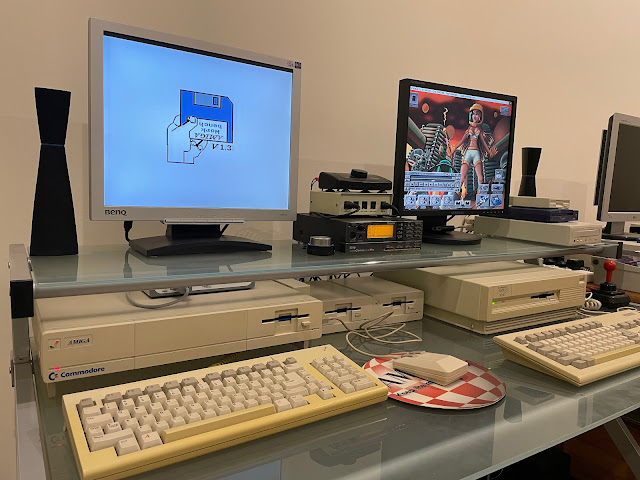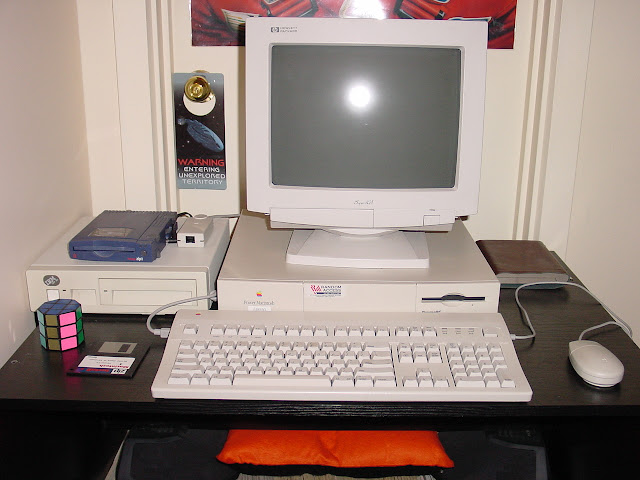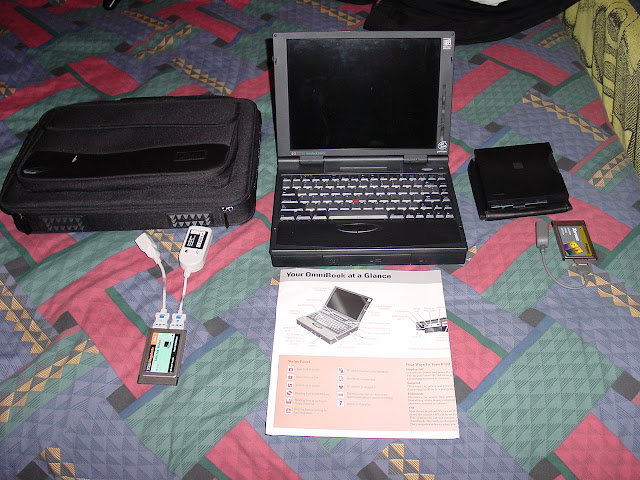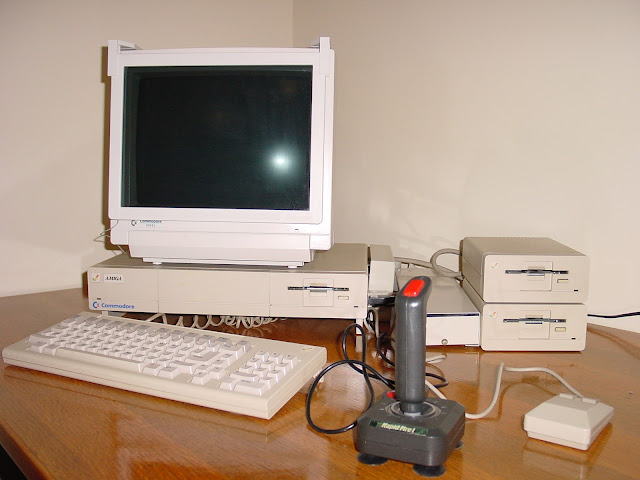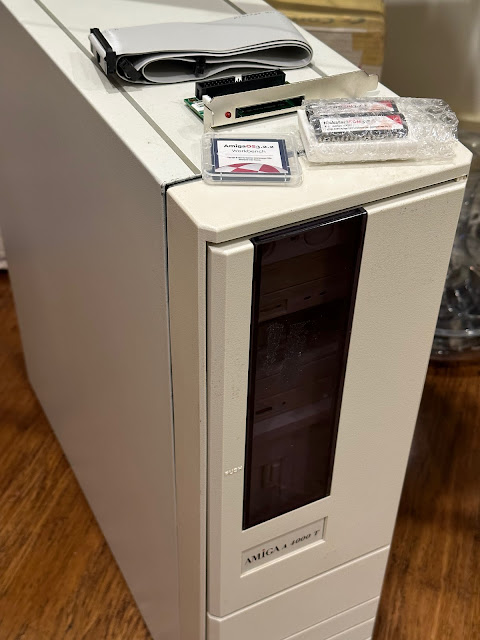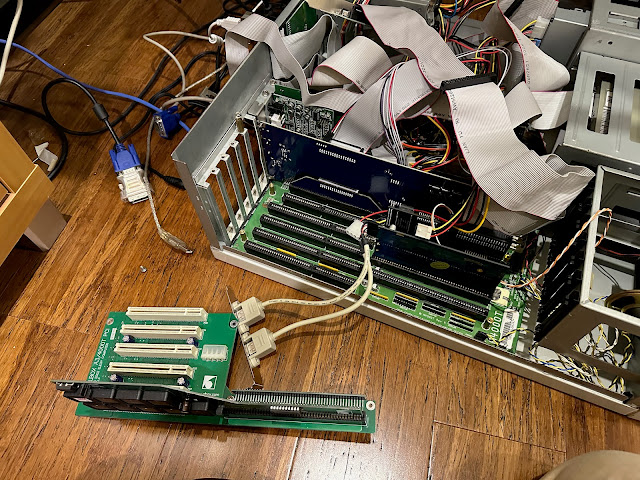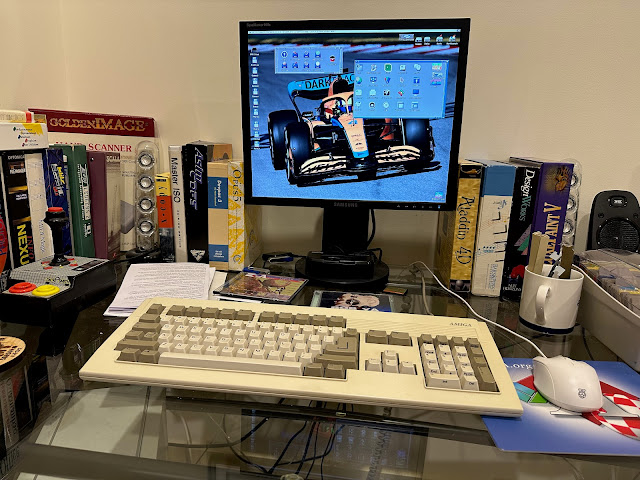Amiga 4000T Upgrade Part 1 - AmigaOS 3.2.2, ZZ9000 and Apps
Ask yourself a question. If you could have the ultimate Amiga, what would it look like?
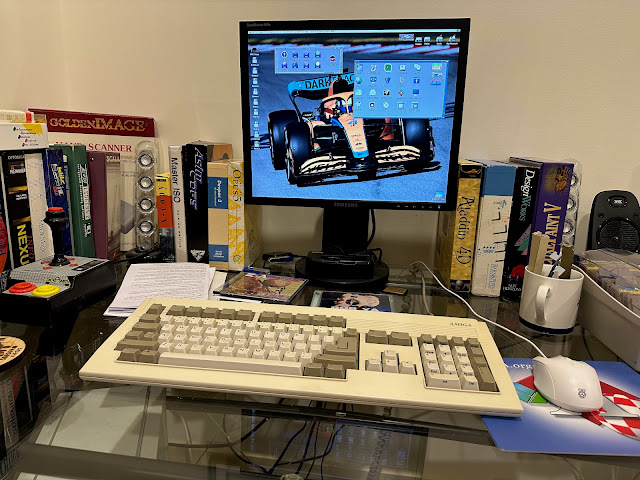
Perhaps grab one of the originally unpopular Amiga 600 computers and upgrade it with the myriad of amazing internal upgrades that turn it into a really amazing computer? Maybe even Vampire it and have HDMI RTG workbench?
Perhaps you like Amiga applications as well as games, and prefer a big box Amiga for this software and to upgrade with Accelerators, RTG cards, USB, network, Video toaster cards. Perhaps an A2000 build like here and here, or A3000 build (like I did here, here and here), or perhaps even a A4000D?
Maybe you want to keep the Amiga hardware completely stock standard, and enjoy how it is with no upgrades - just enjoy your Amiga 1000, 2000, 3000 or 500 as-is with floppy disks, and experience the nostalgia of an era of gaming and demos that was truly awesome.
For me, I LOVE upgrading and playing with my Amigas. All of them.
Asking which Amiga I like best is like asking which of your children is your favourite...I love them all.
The reason I love upgrading and tinkering with Amigas so much, is that it is the final realisation of many dreams I had as a teenager. Maybe it is the same for you as well.
I still remember clearly looking with jealousy at all the upgrades and software I could never have on the store shelves at Myer, Kmart, Bruining Headlam computers, Valhalla, and electronics shows in Australia too.
The Amiga software and hardware upgrades kept coming, even after Commodore went bankrupt.
Amiga got PowerPC accelerators, Warp3D, Picasso IV RTG cards, USB cards and driver support, CD Burners, Network cards, Internet browsers, FTP and telnet clients, Remote Desktop/VNC, MUI, AmiTCP, games and applications needing 030 and 060 accelerators, Geek Gadgets for Linux application cross compiling on AmigaOS, AmigaOS 3.5/3.9, AmigaOS 4.0 and MorphOS for Classic Amiga PPC, and so many more.
In more recent times, AmigaOS 4.1 Final Edition Classic for PPC Amigas (Classic and NextGen), AmigaOS 3.2.2 for standard Amigas, Gotek floppy drive emulators, ZZ9000 RTG cards, BFG 060 accelerators, Vampire accelerators, Pistorm, MP3 hardware decoders, AmigaOne Sam 460/X1000/X5000, and more. The innovations and new software releases continue in 2023 for Amiga.
Be still my wallet. The Amiga is a demanding mistress.
For me, I dreamed to own an Amiga 4000T ever since I first read about it in Amiga format and CU Amiga back in the day.
The A4000T was the top model released by Commodore just before it went bankrupt in 1994, and subsequently re-released by Escom as an 060 based A4000T with a new Amiga logo until 1997.

After the trauma of owning an old second hand 386DX40 clone MS-DOS/Windows 3.11 PC for two years with no Amiga (the Amiga 2000 was still with my parents then), I finally bought an Amiga 1200 in 1996.
This was achieved from putting money aside while working a night-fill job at Kmart 5 nights a week while full time studying IT at University and paying all the usual bills!
Upgrading the Amiga 1200 with an 030, SCSI, Zip drive and CD-ROM drive (and later towering it as shown below) took all of my money and then some. I had little money to spend on software, so I had to choose only a few items to buy, and missed out on so much.
Cover CD's on Amiga Format and CU Amiga helped a lot in that period, along with Aminet downloads via internet 56k dial-up modems (remember them?) to try out new software inexpensively.
I picked up other Amigas from second hand stores in the late 1990's, in an era when no-one wanted them and they were not "retro". Most I got for $20-$50 - my Amiga 500, 600, A1000, and CD32.
If you think that was just a 1990's thing, it isn't. Go take a look at the price of a Nintendo Wii or Sony PSP today - no one wants them. You can buy one for $20 and sometimes less. I bought a Wii to get software I never tried on it, which sells for $5-$7 each now, and also try out running linux on it!
There is a period that no one wants these old systems and they cost almost nothing. Eventually people get nostalgic about them and they become "retro" and increase in value as the rareness increases over time due to them being thrown out.
As Amiga faded from the general public view in the late 1990's in favour of PC's and Macs, Amiga software was still being released at a slower rate, but now required higher hardware specs than I had.
I was frustrated, but I had come up with a plan.
I picked up a PowerMac 6100AV (my first ever Macintosh) courtesy of a university clear out of old hardware in the late 1990's. I played with it for a bit, and then sold it on for a profit on eBay as I had little interest in anything that was not an Amiga back then.
This was the first time I had sold anything on eBay, and I was impressed I could make money from a computer - I assumed they always lost value!
I did the same with other computers I bought second hand (in the late 1990's) in the early 2000's - C64, Amstrad, Atari, 3D0, PC and lots of other systems. I got some old laptop computers for free from work too when they were end of life and they just wanted to get rid of them.
I kept them for a while and sold them on as they appreciated in value. If I knew how much some of them were worth now I definitely would have kept them longer!
By then Escom had folded, and A4000T's were no longer available new. Remaining stock then sold out. I had to act quicker or miss out entirely.
In my desperation I even sold off some of my Amigas too, including my Micronik tower converted Amiga 1200, A600, A500 and A1000 too.
I reasoned they would be easy to buy again as there are more of them around. I had picked up some Amiga Technology A1200's from a G-Soft store clear-out of Amiga stuff. I also sold them on, keeping one for myself.
It took 4 years of selling computers and saving money from working while paying off loans, but in 2004 I finally got the money together to buy my Amiga 4000T. It was advertised on Trading Post (a long gone local newspaper that was for selling items) from a Queensland seller.
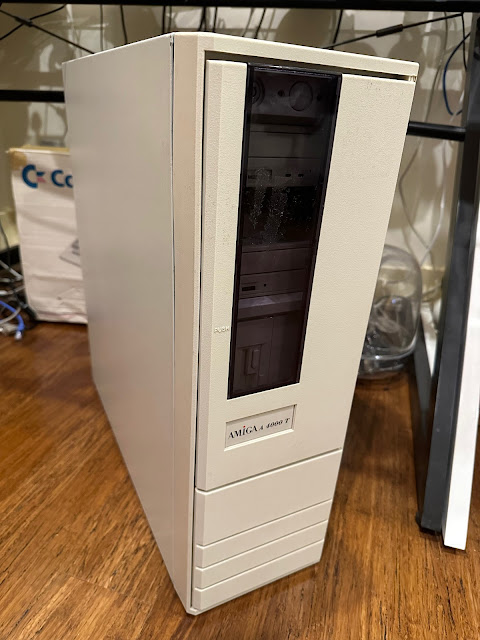
- Phase5 Cyberstorm PowerPC 060 accelerator (until the PowerPC CPU failed)
- Mediator PCI bridge board expansion with PCI slots
- Voodoo3 PCI graphics card to play Warp3D games and RTG Workbench
- SoundBlaster 128 PCI for higher quality sound playback
- RTL8029 PCI network card for internet access
- Deneb USB Zorro Card with flashrom to preload Poseidon for USB boot support
- Indivision AGA Mk2 for scan doubled output (two TFT screens - one for native, one for RTG)
- CD drives (2)
- AmigaOS 3.9
- Large 127GB IDE hard disk (which was later replaced with a MicroSD card converter 64GB hard disk).
You can see the PCI cards are offset, which is due to the Mediator PCI bridgeboard, which causes all the cards to sit higher than they would if connected to the Zorro slots underneath.
At the bottom you can see the Mediator PCI to Zorro bridge card, that connects the PCI bus to the Zorro bus.
I guess it makes it easier to install and remove the accelerator board, but seriously, how did the previous owner make such a hash of doing it?
The A4000T kickstart roms are special in that they needed to support IDE and SCSI on the same system, the only Amiga that has this. The extra requirement for both meant the kickstart rom chips were not big enough to fit them. So to do it, the workbench.library was removed from the rom and moved onto the hard disk. You need to ensure this file is on the hard disk or the system won't boot.
One thing that took me some time to work out is the correct positioning of the two kickstart rom chips.
Sadly you can't buy this card anymore, which is a shame as it is a great card. I wish I had bought more than one but I couldn't afford it!
With the onboard flashrom, via workbench tools, you can also load all the poseidon related device support on power on, allowing the A4000T to boot AmigaOS from a suitably prepared USB drive. There is an internal USB port I presume is intended for such a purpose.
As putting the A4000T back together is a bit of long thing and I have more work to do in there, I left it open while I tested the new AmigaOS 3.2.2 kickstart roms work - fortunately they do!
I connected the other end of the IDE cable to the primary port on the Buddha IDE Zorro card I also have installed in my A4000T.
You may also note that I changed out one of the TFT screens. The previous ones are VGA input only, and I need one with DVI input for the ZZ9000, which actually outputs HDMI output.
The separate module for this needs to be connected with ribbon cable. They learnt from the Picasso IV that people really don't want to physically break the card to use it on an Amiga 2000. So this separated module gives flexibility for this card to work in the Amiga 2000 with Zorro 2 firmware, 3000(T) or 4000(T) with Zorro 3 firmware.
Next I complete the wiring for the ZZ9000AX audio card section. The instructions are great, and walk you through exactly where to connect everything.
For fun I decided to see if the card could be installed with the PCI bridge board in place. Here you can see the scan doubler section in the 1st video slot pushed right up against the bridge board edge. The 2nd video slot is covered by the PCI bridgeboard.
I guess technically you can do this, but I am not sure of the benefit unless you want to use other PCI cards I don't have installed like a tv card or something? The TV part is analog and wouldn't work anymore anyway, with only a handful of digital tv PCI cards that work with the Amiga...
Anyway, I decided to remove all the PCI cards, and then the Mediator bridge board too. Here it is removed:
It makes the inside much cleaner, and less stress on the A4000T PSU itself since it no longer has so many cards to power. I connect the CF card converter and Deneb USB ports to the rest of the case, which I had to remove in order to remove the Mediator PCI bridgeboard.
Another nice benefit with the ZZ9000 with the ZZ9000AX module is that it passes through the Amiga audio directly, without the need to touch the Paula onboard audio ports like I used to have to do. This means just one output audio plug from the ZZ9000AX to get all the audio.
AmigaOS 3.2.2 system is still working, booted from the new CF card. I still keep the SD card which contains my previous A4000T setup and data removed at this stage.

Checking the partition setup on the SD Card, as expected I now have more space:
Then I worked on the big one, transferring data from the various smaller 4GB partitions on the Sd card to the larger partition I just created, which is easily large enough to fit them all.
I thought things were going well, and they did for a few hours. And then it didn't. Checksum error time. Great....
I also got some commercial CD burning software that requires this driver to work, so that is why I am installing it also.
The installation is easy to step through, and has a now SCSI query tool to locate the CD drive and create the required mount list entry for it.
In my case it is on the 2nd.scsi.device. At this point I realised why I have had problems with the scsi NEC CD-ROM drive - it is shown using all the ID's except one!
I know it is setup to ID 3, so I selected that, and completed the installation. After the reboot, I inserted the latest K&A Plus cover CD and it worked straight away! :-)
The default cd player AsimTunes included with AsimCDFS is not a patch on the way cooler looking GroovyPlayer, but it works, and here it is:
There is also a AsimPrefs to see the configuration. Curiously it is not setup as a CD0 device icon in the DOSDrivers folder...
I then installed the much cooler Groovyplayer, and configured it to connect to 2nd.scsi.device, ID3 in it's settings so I can use the CDROM with it.
You may remember earlier I showed the Luciferin utility to upload contents to the Flashrom of the Deneb, which I couldn't show as the rescue jumper was set. Now that is removed, I can see and adjust the contents of the flashrom - at the moment I have disabled the flashrom to avoid issues with the newer Poseidon version.
I will need to update the files on the Flashrom to the later 4.5 poseidon files to re-enable it safely.
I started to get busy with application installations on the CF card at this point, installing Cubic IDE (editor), Hippoplayer, AmigaAmp, IMP3 for streaming modules, AmigaGPT, and the latest iBrowse web browser.
At this point I really do need to get the ZZ9000 RTG card and the ZZ9000AX module working. For this I need to install Picasso96 first - I am using the later Individual Computers commercial version, rather than the free one on aminet. This is because the commercial one fixed some issues with the ZZ9000 RTG screen update which I saw when using the free one on the Amiga 2000 ZZ9000 setup I did last year.
I installed the commercial version of Roadshow for network support. Lastly, after a reboot, I ran the ZZ9000 installation:
After the reboot, the new RTG screenmodes are available to select from the ScreenMode preferences - I choose to use 1280x1024 in 32bit colour, as that is the highest resolution my TFT screen supports:
Having saved, the Workbench screen now changes to 1280x1024 and the font is now very small indeed, and plenty of screen real estate now!
I then changed the Workbench background to something more appropriate to a true colour workbench screen:
I played around increasing the text size to Size 13 instead of 8, and using black shadows on white icon text so it is readable on my background image.
I celebrated this milestone and enjoyed some AGA demos, which output via the scan doubler video module of the ZZ9000 perfectly.
So strange after so many years of having two screen to just have one again! It gives me more room for more of my application boxes too, so win-win!
Next up I installed Octamed SoundStudio V1 from the original CD. I do wonder if I was the only one who bought this? Most people I know used the free Octamed versions on multiple Amiga magazine cover disks.
It is nice to have this working on the Amiga 4000T RTG screen modes, allowing much more editing space in Octamed SoundStudio:
I then updated AmiSSL to the latest version from Aminet, while enjoying mp3 playback from AmigaAmp on the hardware decoding ZZ9000AX:
I decided at this point to move my Amiga 4000T to the other side of the desk, as I needed the space underneath with future upgrades to come.
I also installed Eagleplayer and setup the nice stereo GUI option for it. At this resolution Eagleplayer fits very nicely on the screen.
I then tried Aladdin 4D, software I recently purchased. It was still shrink-wrapped and had never been opened. What a waste. I immediately opened it and installed it!
Next up, I installed Twist 2, a database program I bought last year as I had never heard of it! It was released after Commodore went bankrupt, while I was in the timeframe that I didn't have an Amiga to use, which is why I missed out on it.

I also bought another application recently called Maxon Magic, which I had never heard of or used before:
It gives you some screen savers and allows you to custom system events to specific sounds. I remember having a Homer utility on my A1200 back in the 90's that would play random homer sound samples on various system events and on startup. Made me smile everytime. I should try to find it again...
I suppose if I had a non-RTG system, these screen savers would be ok, but on this system they look very basic and low resolution too. I should load this on my Amiga 500 instead!
This is software I would love to spend more time with - I know SCALA is still around today. I would be curious if you can upload a project created in this version to the new version for Windows today? Anyone know?
Being able to use the RTG modes and full colour palette (unlike the newer Personal Paint which is limited to 256 colours) is a big strength for Photogenics.
I also recently located and purchased a boxed copy of Final Calc to complement my purchased Final Writer, Final Copy and Pen Pal applications from the same company (Softwood):
Again, another program I should try to see how functional it is to export content to Excel...by the way the date and time is wrong as I currently have no battery installed in the A4000T.
I also bought an older version of Pagestream. I wanted to buy the latest version which is still available, but unfortunately the website refuses to allow me to register on the website to purchase - it keeps saying the postcode is wrong...anyway. For now I use the older version:
Next, I moved the Roland SC-88 Pro midi device and sound sampler hardware from the A3000 to the A4000T. I used a Serial MIDI port converter (with cables) to connect to it. I then tested playing MIDI files with Deluxe music 2 and it works great!
Amiga Addict's newest issue arrived while I was doing this, which gave me something to read while feeding in the disks!

I also finally got around to installing the commercial product Hollywood 9 and the associated Designer product, which allows programming script language productions and software through a large setup of plugins. You can compile projects for AmigaOS, MorphOS, Windows, Mac and Linux! All from your Amiga :-)
Pixel 3D and Anime workshop, two more programs I bought last year that were new in box, never opened. Below I already opened Pixel 3D, but you can see Anim workshop still shrink wrapped with the price attached. Yikes.
I know a lot of people used Personal Paint back in the day, and it is good to see development of this software continue in 2023.
As you can see it was not for sale. I installed the Photoworx software on the Amiga, and it then read the CD:
You can also view in a preview photo mode which looks much better, taking full advantage of the ZZ9000 RTG screen size!
